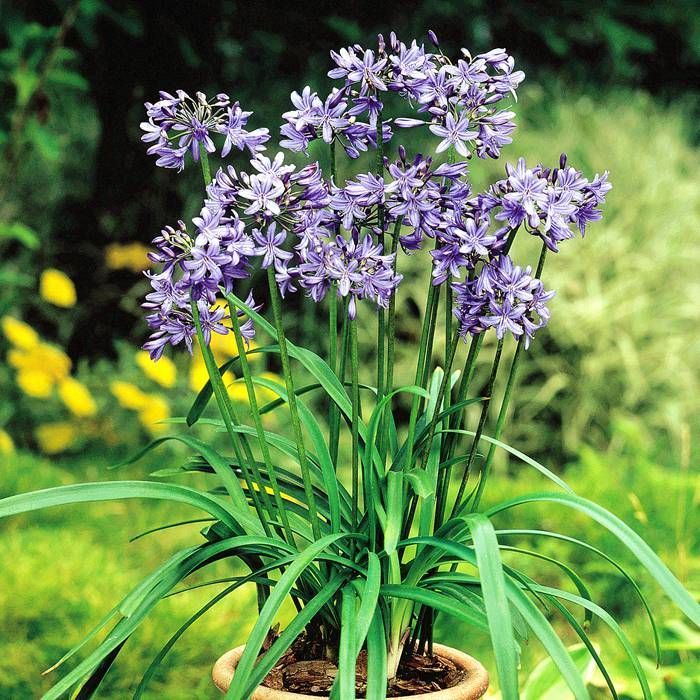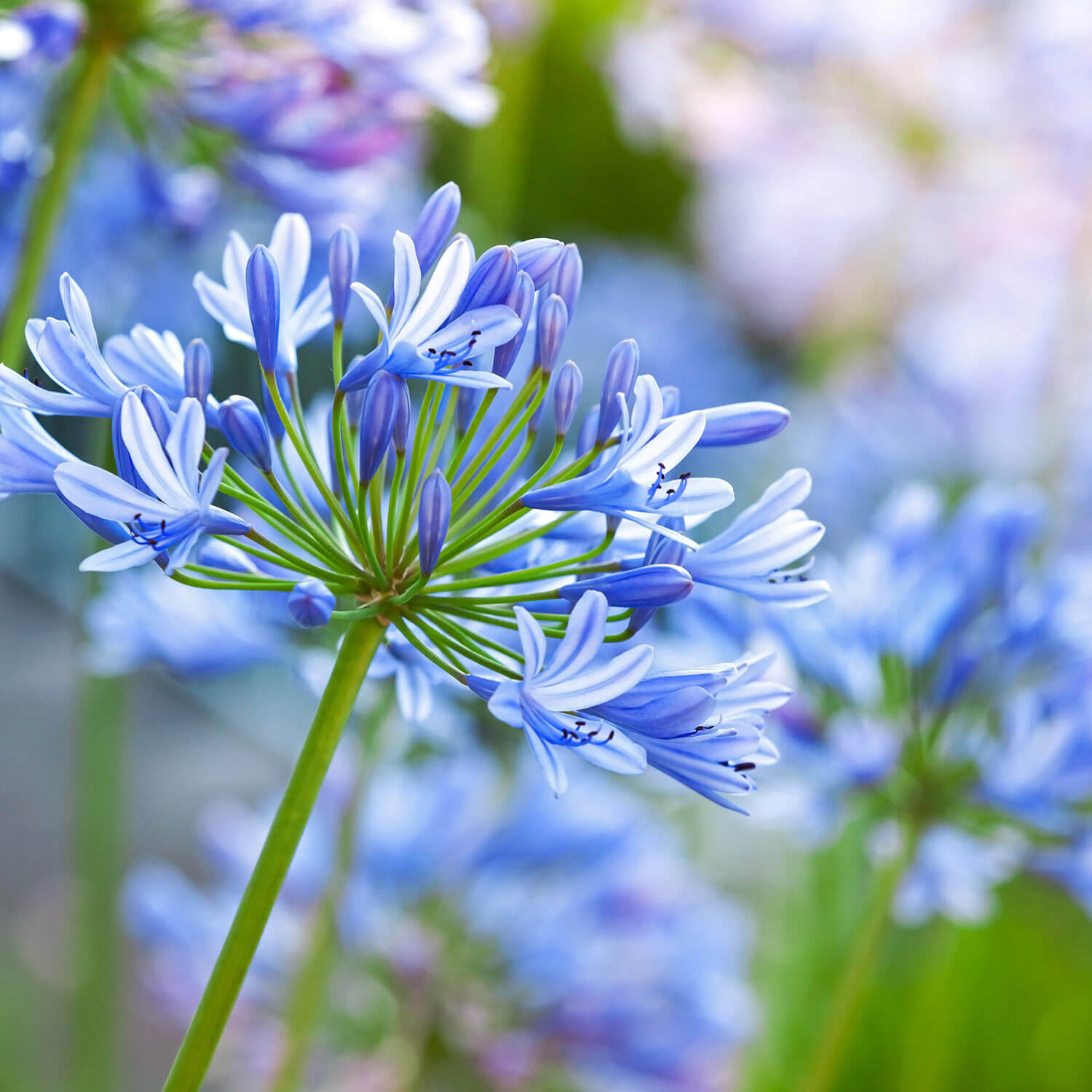Understanding the Art of Agapanthus Treatment: Vital Actions for Healthy And Balanced Development and Vivid Blooms
In the realm of cultivation, the farming of agapanthus stands as a gratifying venture for those that seek to nurture these classy flowering plants. With their striking flowers and graceful foliage, agapanthus has recorded the attention of gardeners worldwide. However, achieving optimal growth and dynamic blooms calls for a nuanced approach that includes numerous vital steps. From selecting the appropriate selection to grasping pruning techniques, the trip in the direction of growing flourishing agapanthus plants is complex and holds the crucial to unlocking the complete possibility of these herb treasures.

Selecting the Right Agapanthus Variety

When selecting the right Agapanthus range for your yard, think about aspects such as environment viability, flower shade, and development practice. In addition, consider the environment in your area to make sure the Agapanthus selection you pick can thrive in your details problems. Recognizing the development habit of different Agapanthus ranges is important for appropriate positioning within your garden.
Suitable Planting Problems
Taking into consideration the ideal environmental needs is necessary for effective Agapanthus cultivation. Agapanthus thrives in well-draining soil with a somewhat acidic to neutral pH degree. When growing, pick a location that gets complete sunlight to partial color. In hotter climates, offering some afternoon shade can stop scorching of the leaves. Agapanthus plants are delicate to chilly temperatures and ought to be shielded from frost throughout cold weather.
To make sure healthy and balanced development and dynamic flowers, plant Agapanthus light bulbs at a deepness of concerning 2-4 inches and area them 8-12 inches apart. Adding natural matter, such as compost, to the soil can boost drainage and fertility, promoting robust origin development. Mulching around the base of the plants assists retain moisture and reduces weed development. Normal watering is important, especially throughout the expanding season, to keep the soil consistently wet but not soaked.
Watering and Fertilizing Tips
Keeping appropriate dampness levels and supplying essential nutrients are crucial elements in the treatment regimen for Agapanthus plants. When it pertains to watering Agapanthus, it is essential to strike a balance. If overwatered, these plants choose consistently moist soil however are susceptible to root rot. During the growing season, water deeply as soon as a week, guaranteeing the dirt is well-draining to prevent waterlogging. In hotter climates or during durations of drought, even more constant watering may be needed to keep the dirt evenly wet. Nonetheless, decrease watering in the winter to stop water logged problems.
Feeding Agapanthus is essential for promoting healthy development and prolific flowers. Use a balanced fertilizer, such as a 10-10-10 formula, in the early spring as new growth arises. By complying with these watering and fertilizing tips, you can guarantee your Agapanthus plants flourish and generate vibrant, resilient blooms.
Trimming Methods for Agapanthus
Pruning Agapanthus plants at the appropriate times and with appropriate strategies is vital for maintaining their health and advertising optimum development and flowering. The suitable time to trim Agapanthus is in late winter or early spring prior to brand-new development arises. Beginning by getting rid of any yellowing or dead fallen leaves near the base of the plant. Cut them as short as feasible without harming the arising shoots.
For flowered stems, wait till the blooms have perished and after that cut them back to the base. This not only cleans up the plant's appearance however also urges the development of new blossom buds. Deadheading spent flowers can also redirect the plant's energy into producing even more blooms as opposed to establishing seeds. Nonetheless, if you wish to gather seeds for propagation, leave some flowers to mature and completely dry on the plant.
Keep in mind to utilize tidy, sharp tools to make specific cuts and reduce the threat of introducing diseases. Agapanthus. Normal pruning will aid keep your Agapanthus looking neat and healthy while guaranteeing an abundant screen of lovely blossoms
Dealing With Usual Bugs and Diseases
After making sure correct trimming methods for Agapanthus, it is necessary to attend to typical insects and conditions that can impact the health and wellness and vigor of these plants. Agapanthus plants are generally hardy yet can still succumb to certain concerns. One usual bug that affects Agapanthus is the Agapanthus gall midget. This tiny, orange fly lays its eggs in the vegetation, resulting in distorted development and flower buds that fall short to open up. To battle this parasite, prune and ruin any kind of damaged plant components and think about utilizing insecticidal soap. page
Another common problem is fungal fallen leave area, which offers as dark sores on the fallen leaves. To avoid fungal diseases, ensure excellent air blood circulation around the plants, avoid overhanging watering, and eliminate any type of contaminated leaves without delay. Additionally, Agapanthus plants can experience from root rot if they are grown in poorly draining dirt. To prevent this, plant Agapanthus in well-draining dirt and prevent overwatering. By being watchful and taking timely action against conditions and insects, you can help your Agapanthus plants grow and create lively flowers.

Verdict
To conclude, mastering the art of agapanthus care entails choosing the best variety, providing excellent growing problems, appropriate watering and fertilizing, appropriate pruning methods, and addressing common bugs and diseases. By complying with these vital actions, you can make certain healthy growth and vivid flowers for your agapanthus plants. Remember to regularly keep track of and maintain your plants to promote their overall well-being and longevity.
To guarantee healthy and balanced growth and vivid flowers, plant Agapanthus light bulbs at a deepness of concerning 2-4 inches and room them 8-12 inches apart. Get More Info By adhering to these watering and fertilizing ideas, you can ensure your Agapanthus plants prosper and Get More Info create vivid, durable blooms.
One typical parasite that influences Agapanthus is the Agapanthus gall midge. In addition, Agapanthus plants can experience from root rot if they are planted in badly draining pipes dirt. By adhering to these essential actions, you can ensure healthy and balanced development and dynamic blooms for your agapanthus plants.
Comments on “Agapanthus Growing Conditions: Dirt, Sunlight, and Watering”